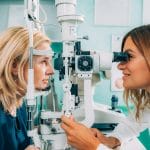Remote patient monitoring (RPM) and hospital-at-home (HaH) models are gaining traction in the current health care environment, bringing hospital-level care directly to patients’ homes. Driven by advances in digital devices, telehealth and supportive policies, these models enable continuous monitoring and real-time data sharing with providers. RPM and HaH not only have the potential to improve patient comfort and satisfaction but could also reduce costs, free up hospital capacity and lower readmission rates. And, patients seem to favor these new approaches to health care as well.
According to HealthArc, with millions of providers potentially benefitting from remote patient monitoring systems and devices, the number of patients favoring RPM has risen to 30 million in 2024, up from 23 million in 2020. This number is expected to reach an estimated 70.6 million by the end of 2025 in the United States alone. As demand for acute and chronic care rises, these innovations are reshaping health care by enhancing access, safety and outcomes.
Enhanced patient monitoring and safety
RPM can enable continuous, real-time tracking of patients’ vital signs and health status outside traditional clinical settings, allowing for early detection of deterioration and prompt intervention. This constant oversight could significantly improve patient safety, support better clinical decision-making and allow more patients, including those with higher acuity, to receive hospital-level care at home.
In addition, by extending clinical supervision into the home, RPM could help prevent emergencies and hospital readmissions, ensuring high-quality care without prolonged hospital stays. Enhanced patient monitoring and safety is a core theme of RPM and HaH models, as technology-driven surveillance transforms care delivery, reduces risks and leads to better patient outcomes.
Improved patient engagement and outcomes
By providing patients with accessible tools to manage their conditions remotely, RPM can foster greater patient involvement and adherence to care plans. This empowerment can lead to better self-management, reduced unnecessary clinic visits and improved health outcomes, especially for chronic and complex conditions.
Improved patient engagement and outcomes will enhance patient trust with providers and lower overall costs because these approaches empower patients to take a more active role in their health care, leading to measurable improvements in both experience and clinical results.
Also, RPM tools encourage patients to regularly monitor their health, track vital signs and help them understand how their behaviors and treatments impact their well-being. This increased involvement could foster better adherence to care plans and healthier habits, which are directly linked to improved health outcomes.
Cost reduction and operational efficiency
RPM and HaH are also proving to reduce costs and improve operational efficiency in several key ways. By enabling early detection of health issues, RPM allows clinicians to intervene before complications escalate, which has been shown to significantly reduce 30-day readmission rates across various health systems. These improvements could lead to significant cost savings for health care systems and their patients.
Continuous monitoring also supports preventive care, helping to avoid expensive treatments and hospital stays by addressing health concerns early. Additionally, RPM optimizes resource allocation and workforce efficiency, as clinicians can monitor many patients simultaneously—far more than in traditional settings—with a single nurse able to oversee between 125 and 250 patients, streamlining workflows and reducing staffing costs. Patients also benefit from fewer in-person appointments, lower transportation expenses and a decreased risk of hospital-acquired complications, all contributing to overall savings. Furthermore, by reducing unnecessary utilization and improving outcomes, RPM and HaH models could help providers avoid financial penalties and qualify for value-based incentives.
The takeaway
The evolving adoption of RPM and HaH models is fundamentally reshaping health care by delivering high-quality, cost-effective care directly to patients’ homes. Evidence shows that these approaches can dramatically reduce hospitalizations while maintaining patient safety and satisfaction. By leveraging digital health devices and real-time clinician oversight, these models not only improve outcomes but also ease the burden on hospitals and health care systems, resulting in substantial cost savings and operational efficiencies.

Michael Haas
Michael Haas is a technology management consulting manager in RSM US LLP’s health care industry practice. In 2022, he was selected for the firm’s Industry Eminence Program as a senior analyst covering the health care industry, working alongside the firm’s chief economist and other program participants to analyze the trends and themes affecting the nonprofit and education industry and shaping middle market businesses. Michael is based out of RSM’s New York City office.







